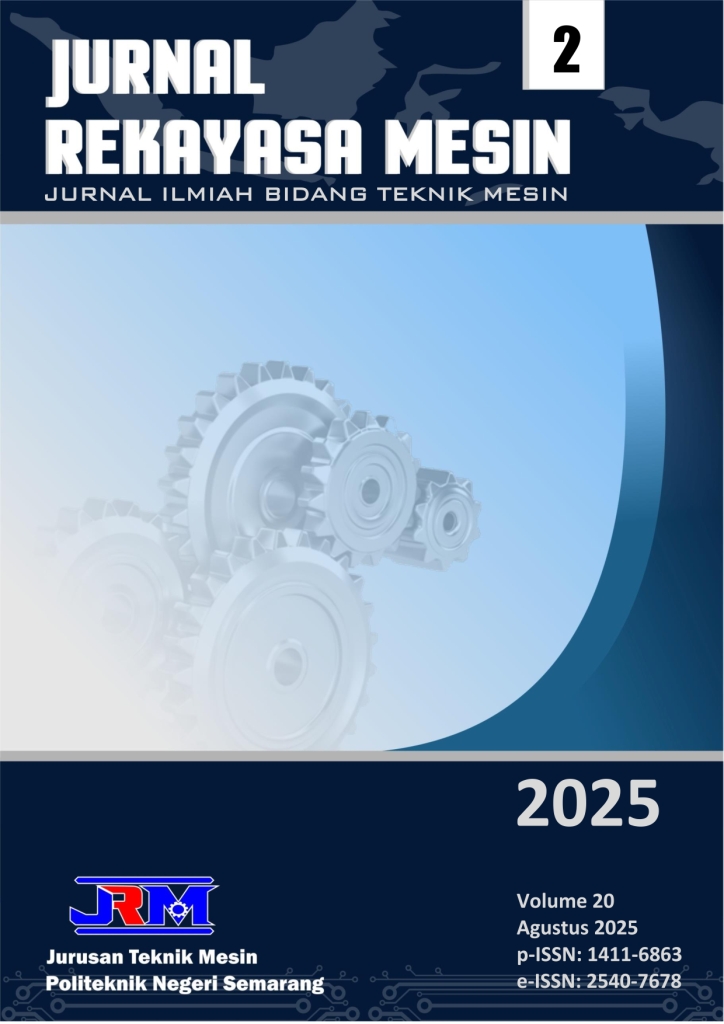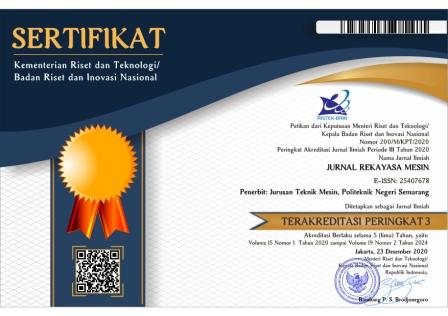The Influence of Full Annealing Process Combined with Repetitive Hammering on the Mechanical Properties of AISI 316 Steel
DOI:
https://doi.org/10.32497/jrm.v20i2.6369Abstract
AISI 316 steel is known for its corrosion resistance, high hardenability, and good formability. It belongs to meta-stable austenitic stainless steel, where its microstructure can transform into α-martensite under treatments like Dynamic Plastic Deformation (DPD). This steel contains 16-18% Cr and 10-14% Ni. This study aims to analyze the mechanical properties of AISI 316 steel after annealing and after combining annealing with strain hardening through repetitive hammering. The research parameters included full annealing at 1050ºC with a holding time of 30 minutes, followed by repeated hammering for 30, 60, and 90 times, and annealing at 1050ºC with repeated hammering 30 times at the same temperature. A 5 kg iron load was used during the hammering process. The tests conducted were Optical Emission Spectroscopy (OES), hardness testing using the micro vickers method, tensile testing, microstructure analysis, and calculations of strain and thickness reduction. Results showed that the untreated specimen had a hardness of 269.3 VHN, while full annealing at 1050ºC reduced it to 165.2 VHN. Combining annealing with 30, 60, and 90 hammer blows increased hardness to 213.4, 228.5, and 251.4 VHN, respectively, demonstrating the effect of repeated hammering on the mechanical properties of AISI 316 steel.
Downloads
Published
How to Cite
Issue
Section
License
Copyright (c) 2025 Destri Muliastri, Slamet Raharjo

This work is licensed under a Creative Commons Attribution-NonCommercial-ShareAlike 4.0 International License.
Copyright of articles that appear in Jurnal Rekayasa Mesin belongs exclusively to Penerbit Jurusan Teknik Mesin Politeknik Negeri Semarang. This copyright covers the rights to reproduce the article, including reprints, electronic reproductions, or any other reproductions of similar nature.







